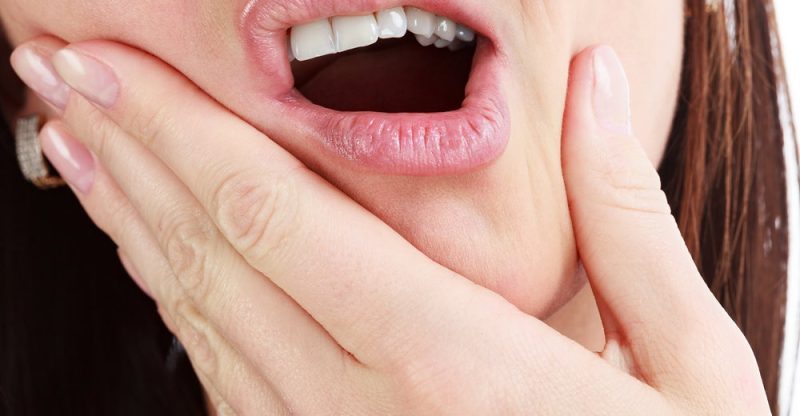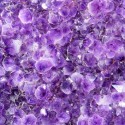Gingivitis Symptoms, Causes and Natural Treatments
Gingivitis is a condition that causes inflammation and infection inside the gums. It’s caused by bacterial plaque build-up, which overgrows on the teeth and gum tissues. The American Dental Association says it should be treated with scaling, root planing, or surgical removal of infected tissue.
The most frequent kind of gum disease is gingivitis. It is uncommon in youngsters, but it often begins at puberty or early adulthood and lasts for the rest of one’s life.
Gingivitis affects 70 percent to 90 percent of individuals in the United States. Plaque accumulation on the teeth and gum line is the most common cause in most individuals. It is frequently treated and preventable using natural therapies and good dental hygiene.
What Is Gingivitis?
Gingivitis is a condition in which the gums enlarge or become inflamed. It is categorized according to how it appears, what causes it, and how long it lasts. Gingivitis comes in a variety of forms, including:
- Ulcerative
- Hemorrhagic
- Necrotizing
- Purulent
- Drug-induced
- Hormonal
- Nutritional
- Infectious
- Plaque-induced
- Short-term
- Long-term
The majority of individuals suffer from gingivitis, which is caused by plaque. This indicates that microorganisms in the mouth are not being effectively removed. Over time, the bacteria builds up and irritates and inflames the gums. Inflammatory gingival enlargement or gingival hyperplasia – a swelling or overgrowth of the gums — may occur when plaque and poor hygiene are the cause. In addition, medication, health issues, hormone imbalances, and uncommon hereditary diseases may all cause gingival growth.
Gingivitis begins with a minor swelling that may progress to lesions, oral discomfort, tooth loss, and other indicators of severe gum disease over time.
Periodontal disease progresses as follows:
- Gingivitis is a condition in which the gums become red, swollen, and bleed readily.
- Periodontal pockets arise when plaque forms behind the gum line, the gums recede, and pockets form.
- Periodontitis – When plaque, tartar, and bacterial infection build up over time, the gum and bone structure that supports the teeth deteriorates, and the teeth become loose and need to be removed.
Gingivitis is infectious, right?
Both yes and no. According to the American Academy of Periodontology, the germs that cause gingivitis may be shared by kissing, sharing utensils, or any other kind of saliva interaction. However, other variables, such as how thoroughly you brush your teeth, have a role in developing gingivitis. Therefore, they advise against sharing toothbrushes or eating utensils with anybody who has gum disease symptoms.
Symptoms
Healthy gums are firm, taut, and pale pink. They are designed to fit snugly around your teeth and extend to the very crowns of your teeth.
Gingivitis symptoms and signs include:
- Gums that be swollen or bulging
- Tender gums
- Gums that are dark crimson or reddish-purple in color.
- Gums that are receding
- Gums that bleed, particularly after brushing or flossing
- Bad breath that doesn’t seem to go away
Don’t dismiss the signs and symptoms of gum disease; they might indicate something more severe. In addition, gum disease is linked to various health issues that impact the whole body, including heart disease and diabetes.
Risk Factors and Causes
Plaque (food and bacteria) accumulation on the teeth is the most prevalent cause of gingivitis. The bacteria and toxins they produce infect and irritate the gums, causing them to become tender and swollen.
Gum disease may be caused by several reasons, including:
- Oral hygiene issues
- Being 65 years old or older
- Tobacco use (smoking or chewing)
- Having a hereditary predisposition
- Stress
- Low immunity (for example, in HIV/AIDS patients)
- Taking some prescription medicines, such as birth control pills, antidepressants, and cardiac medications
- Clenching or grinding your teeth is a common occurrence.
- Teeth that don’t fit together well
- Crooked teeth
- Poorly fitting mouth equipment, such as braces or dentures
- Pregnancy
- Other illnesses, such as heart disease, diabetes, or rheumatoid arthritis
- Unhealthy eating habits
- Obesity
Treatment
Make an appointment with your dentist if you have signs or symptoms of gum disease. Your dentist may diagnose gingivitis. The dentist or hygienist will clean your teeth and instruct you how to brush and floss properly during your session. They may also suggest the following traditional gingivitis treatments:
- Cleanings of the teeth regularly (at least once every six months)
- Mouthwash with antibacterial properties
- Retainers or orthodontics are used to straighten teeth correctly.
- Dental appliances may need to be repaired or replaced.
- Other medical disorders’ treatment
- Anti-inflammatory drugs sold over-the-counter
Other drugs, a deeper physical cleaning of your teeth and gums, or even dental surgery may be required if gingivitis has advanced to more severe gum disease.
What is the best way to get rid of gingivitis?
In many circumstances, conventional therapy may successfully correct gum disease. In addition, a professional dental cleaning and good oral care at home may help you reverse gingivitis. These two measures, in many situations, are sufficient to reverse gingivitis and lead to healthier gums. In more difficult situations, your dentist may be able to provide further advice on how to treat gingivitis. If you have diabetes, for example, you may need to bring your blood sugar under control.
How long will gingivitis take to heal?
Within one to two weeks, if your teeth have been thoroughly cleansed of plaque and you are using basic hygiene procedures, you should notice decreased bleeding and gum pain. However, if you have more advanced gum disease or other aggravating conditions like pregnancy or sickness, you may not experience any improvement until your other problems are resolved. To prevent gingivitis from recurring, you must maintain proper dental hygiene throughout your life.
Natural Treatments
Many home treatments for gingivitis are simple to implement and may be integrated into any conventional treatment plan recommended by your dentist. However, if you’re on medication or have a health problem or sickness, see your doctor before discontinuing or beginning any supplements, new diets, or other therapies for your gingivitis.
1. Brush your teeth with natural mouthwash.
Mouthwashes produced at home may help battle the germs that cause plaque and gum disease. They may also help with swelling and pain in the gums. To alleviate your gingivitis symptoms, consider the following DIY natural mouthwash options:
- Use essential oils to make your own mouthwash. The following is Dr. Axe’s homemade mouthwash recipe:
- 5 drops essential oil of peppermint
- 5 drops essential oil of tea tree
- 2 c. fresh spring water
- To combine the oil and the water, shake the bottle. Then, for 30 seconds, swish a tiny quantity around in your mouth. Then, get it out of your system.
- Lemongrass, aloe vera, sage, and guava leaf oils are some of the other essential oils that may be used in mouthwash.
- Rinse with salt water. A saltwater rinse may eliminate germs while also aiding in the removal of food from your mouth. It may also help your gums recover faster.
- Dissolve 12 to 34 teaspoons of salt in a glass of warm water.
- Spit out the mouthwash after 30 seconds of swishing it around in your mouth.
- At least twice or three times a day, do this.
2. Brush and floss your teeth properly.
Follow the steps outlined by the American Dental Association for appropriate mouth cleaning:
- Brush your teeth with a soft-bristled brush at least twice a day. Then, every three to four months, replace the brush.
- Brush your teeth and gums at a 45-degree angle with the brush.
- In brief strokes, gently push the brush back and forth.
- Make sure you clean all of your teeth. Brush the inner surfaces of your front teeth by tilting the brush vertically.
- Floss at least once a day to get rid of food and germs caught between your teeth.
- Wrap the ends of 1.5 feet of floss around your middle fingers.
- Slide it between your teeth and form a “C” with it.
- As you drive up, see back and forth and side to side.
3. Think about oil pulling.
You might use oil pulling if you have trouble flossing or find it too uncomfortable at first. Some see it to be more effective than flossing. Follow these steps to perform oil pulling:
- If desired, mix roughly a tablespoon of coconut oil with a few drops of food-grade essential oil like clove or peppermint oil.
- For 10 to 20 minutes, swish it around in your mouth.
- Get it out of your system. Using water or salt water, rinse your mouth.
- Brush normally.
- Oil pulling should be done three to five times a week.
You may also use Arimedadi oil. In a trial of 45 persons with gingivitis, it was shown to be just as efficient as a chemical mouthwash at eliminating plaque and improving gum health.
4. Inquire about nutritional supplements.
A well-balanced diet may be enough to provide you with the vitamins and minerals you need for optimal dental health. Some individuals, however, may not get enough vitamins or minerals from their diet. Vitamins to include in your diet, either via food or supplementation, include:
- Vitamin A is a fat-soluble vitamin
- B-complex vitamins
- Vitamin C is a powerful antioxidant.
- Vitamin D is an important nutrient.
- Vitamin E is a powerful antioxidant.
- Vitamin K
Other supplements that may be beneficial to your dental health include:
- Lycopene
- Melatonin
- Calcium
- Magnesium
- Iron
- Zinc
5. Experiment with current applications.
Although natural topical gingivitis remedies are difficult to come by, official research has shown that they effectively fight plaque and germs. You may manufacture your own or get advice from a dentist or a natural medicine expert on producing an oral gel or paste.
Please remember that most of these choices have minimal study on their safety. None of these gels or pastes should be swallowed. When making natural treatments for gum disease, always use high-quality, food-grade oils, herbs, and spices.
- Rub cloves together. Clove contains anti-inflammatory effects and is an excellent plaque fighter. To produce a topical rub, mince a teaspoon of cloves and apply with a moist cotton ball to your gums. Gently rub the cloves on your gums, let them rest for a minute, then rinse your mouth with water.
- Gel made with turmeric. Turmeric gel applied to the gums was shown to be beneficial in reducing plaque and gingivitis in a trial of 40 people. Its anti-inflammatory properties are most likely to blame. Please note that the research participants also used manual plaque management strategies such as brushing, flossing, picking, and other manual ways to clean their teeth.
- Aloe vera gel is a kind of aloe vera that is used to treat Aloe vera gel was mentioned as a particular therapy for gingivitis in a study of traditional herbal healers in Cameroon. It is made from plant leaves and is applied to the gums.
- Gel made from neem. A study of people who used a gel containing neem (Azadirachta indica) leaf extract revealed that the gel was at least as efficient as a normal chemical mouthwash at decreasing plaque and germs after six weeks.
- The gel of black cumin. The active component in Nigella sativa has been shown in rats to reduce gingivitis symptoms whether administered orally or as a gel. In addition, some preliminary studies in patients with gum disease support the use of oral chips containing the active component in black cumin (inserted into gum pockets by a dentist).
6. What Should You Eat and What Should You Avoid
In general, you should consume a nutritious diet that is rich in healing foods. However, these are some options that may help you combat gum disease specifically:
- Salmon, mackerel, and sardines are examples of wild-caught fish that include omega-3 fatty acids like DHA, which decrease inflammation. Research has also indicated that a greater DHA consumption is linked to a reduced incidence of periodontitis.
- Fresh vegetable juices — Packed with vitamins, minerals, and enzymes.
- Chewing xylitol gum – Some research suggests that xylitol may help reduce the build-up of germs and dental plaque in the mouth.
- Apples and raw veggies – Raw vegetables like celery, carrots, and apples may naturally help clean teeth. Of course, they aren’t a substitute for proper tooth brushing, but they are known to be cleansing when consumed.
If you wish to fight gum disease, you should avoid the following foods:
- Sugar – Sugar feeds germs; therefore, cutting it out of your diet is crucial for gum health.
- Fruit juice – Fruit juice with a lot of sugar coats the teeth and feeds germs in the mouth.
- Processed foods – These foods may include a lot of chemicals and sugar, both of which might encourage bacteria development.
- Grains — Unsprouted and unfermented grains contain phytic acid, which many experts say is harmful to tooth health. (21)
- Hydrogenated oils — Hydrogenated oils such as vegetable oil, canola oil, maize oil, and soybean oil all include trans fat, a well-known promoter of systemic inflammation.
How to Prevent It
1. Eat a diet that promotes good dental health.
Your dental health is influenced by what you eat. Bacteria, for example, thrive on sugar found in carbs. You may be able to prevent or even cure tooth decay and gum disease by eating a diet that promotes healthy teeth and gums. To maintain optimal dental health, Dr. Axe suggests the following dietary changes:
- Sugar should be eliminated from your diet. Use stevia and raw honey sparingly instead.
- Phytic acid should be avoided. Grains, beans, nuts, and soy all contain it. However, you may minimize the quantity of phytic acid in these foods by soaking and sprouting them or doing sourdough fermentation.
- Concentrate on nutrient-dense meals, especially those that include fat-soluble vitamins and essential minerals. Bone broth, meat, fish, eggs, raw and cooked vegetables (particularly leafy greens), and healthy fats like coconut oil or avocado are examples. Processed meals and foods with added sugar should be avoided at all costs.
2. Be a stickler for oral hygiene.
Commit to good dental hygiene if you want to avoid gingivitis or keep it from returning once it has been treated. Because gingivitis may develop chronic or return after treatment, you’ll need to practice proper oral hygiene for the rest of your life.
- Brush your teeth after each meal or at least twice a day.
- Consider using probiotic toothpaste manufactured at home, as well as a baking soda toothpaste or gum rub.
- Floss at least once a day, and oil pull three to five times a week.
- Use an alcohol-free mouthwash.
- At least twice a year, see the dentist for a cleaning. In addition, inquire about other options for efficiently cleaning your teeth.
- Replace your toothbrush every three to four months or whenever it begins to show signs of wear.
- To eliminate plaque and tartar more efficiently, consider using an electric toothbrush.
- Use a dental pick or a specific instrument to extract stuck food and germs out of between your teeth.
- Ask your dentist whether you may benefit from orthodontic treatment or if any of your dental appliances need to be repaired.
3. Take care of your other health issues.
Your oral health and your entire health are inextricably linked. People with poorly managed diabetes, for example, are more likely to develop gingivitis. This is because high blood sugar encourages bacteria to flourish in the mouth, leading to gum disease. In the same way, keeping infections, stress, and other health issues under control might help you avoid gingivitis.
Talk to your doctor about your medicines in addition to obtaining correct treatment for any conditions you may have. For example, some medications make your gums more prone to infection. If you want to discontinue taking a medicine, talk to your doctor first. However, if you’re experiencing difficulties with gingivitis regularly, it’s worth talking to your doctor about your medication alternatives.
4. Avoid using cigarettes.
Quit smoking if you’re a smoker. Likewise, if you chew tobacco, you should stop.
Gum disease is caused by smoking, which is a major risk factor. It is certainly the most straightforward strategy to reduce your risk of gingivitis, except for brushing and cleaning your teeth correctly. Unfortunately, tobacco use might also make it more difficult to treat your gingivitis effectively.
Precautions
- Many herbs and essential oils contain antibacterial properties that might be beneficial in the battle against plaque and gum disease. However, only a handful have been investigated regarding human safety in oral hygiene practices.
- Mouthwash, gum, dental pastes, oil for oil pulling, or other non-food therapies should not be swallowed.
- Do not begin or stop taking any prescription or dietary supplement without consulting your doctor first.
- Consult your doctor or dentist if your gingivitis symptoms do not improve after a few weeks of trying natural therapies.
Last Thoughts
- Gingivitis is a gum disease that affects many people. The most common reason is the development of germs and food particles near the gum line. This accumulation irritates the gums, causing inflammation, edema, and other issues.
- Gingivitis may be controlled and avoided utilizing natural approaches such as proper dental hygiene and a healthy diet in many circumstances.
- Other health issues may cause or be exacerbated by gum disease. Get frequent dental cleanings and see your dentist if you feel anything more than gingivitis is at work.
Frequently Asked Questions
Is gum disease gingivitis curable?
A: Yes, it is.
What kills gingivitis fast?
A: The best way to kill off gingivitis is by eating healthy and avoiding sugar, as well as brushing your teeth twice a day.
FDA Compliance
The information on this website has not been evaluated by the Food & Drug Administration or any other medical body. We do not aim to diagnose, treat, cure or prevent any illness or disease. Information is shared for educational purposes only. You must consult your doctor before acting on any content on this website, especially if you are pregnant, nursing, taking medication, or have a medical condition.
HOW WOULD YOU RATE THIS ARTICLE?





